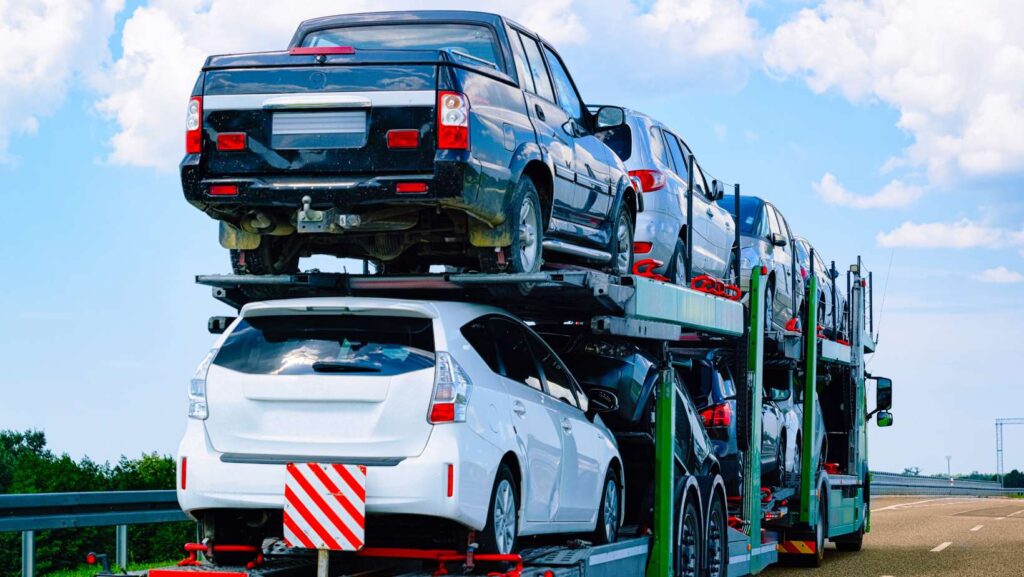You may be wondering how to transport a broken automobile. If you want to sell, repair, or restore a non-running car, you need a safe way to move it. Luckily, there are options for moving such automobiles based on budget, tastes, and demands.
This article discusses the pros and cons of transporting non-running autos. We will also offer transportation preparation advice.
Common Methods of Non Running Car Transportation
Here are some of the common methods of non running car transportation that you can choose from:
- Flatbed tow truck: A flatbed tow truck is one of the most popular methods of non running car transportation. This method involves loading the car onto a flatbed truck and securing it with straps or chains. The entire vehicle is lifted off the ground and transported to its destination. This method is suitable for short distances and local moves.
- Enclosed trailer: An enclosed trailer is another option for non running car transportation. This method involves loading the car into a closed trailer that protects it from weather elements, road debris, dust, dirt, etc. The car is usually loaded using a liftgate or a winch. This method is suitable for long distances and cross-country moves.
- Dolly: A dolly is a small trailer attached to another vehicle’s back. This method involves lifting the front wheels of the car off the ground and securing them to the dolly. The rear wheels remain on the ground and roll along with the dolly. This method is suitable for short distances and local moves.
- Open carrier: An open carrier is a large trailer that can transport multiple vehicles at once. This method involves loading the car onto the carrier using a ramp or a winch. The car is exposed to the outside environment and may be stacked with other cars. This method is suitable for long distances and cross-country moves.
Pros and Cons of Each Method

Each method of non running car transportation has its pros and cons that you should consider before choosing one. Here are some of them:
- Flatbed tow truck:One of the advantages of this approach is its speed, convenience and safety. On the side there are drawbacks such as high costs, particularly for lengthy journeys and limited availability in certain areas or, during specific times.
- Enclosed trailer: There are advantages to utilizing this approach including its ability to provide security, protection and confidentiality. However there are also some drawbacks to consider. One potential downside is the cost, which can be especially burdensome for distances. Additionally it’s important to note that this method may necessitate time and effort, for coordination and organization purposes.
- Dolly: There are advantages to using this method; it is cost effective, straightforward and adaptable. However it also has some drawbacks to consider. There is a risk of damage or accidents related to the wheels and not all vehicles or roads may be compatible with this method.
- Open carrier: The pros of this method are that it is affordable, widely available, and efficient. The cons are that it can be risky, as the car may get damaged by weather elements or road debris, and that it may take longer to deliver due to multiple stops.
Tips for Preparing Your Vehicle for Transport
No matter which method of transportation you decide on for your operational vehicle it is important to take the necessary steps to prepare your vehicle for transport. This will ensure a secure process. Here are some useful tips to help you get your vehicle ready, for transport;
- Inform the transporter: You should inform the transporter that your vehicle doesn’t run and explain why. This will help them prepare accordingly and give you an accurate quote.
- Drain the fluids: Remove all vehicle liquids, including fuel, engine oil, coolant, brake fluid, and others. This precaution prevents leaks and spills that could cause damage or fire.
- Remove personal belongings: Make sure to take out any items from your car like documents, valuable items, electronics and so on. This way you can avoid the risk of theft. Losing them while your vehicle is being transported.
- Secure loose parts: Make sure to secure any parts or accessories on your vehicle like mirrors, antennas, spoilers and so on. This way you can prevent them from falling off or getting damaged while being transported.
- Inspect your vehicle: Make sure to examine your vehicle both before and after transportation. Take note of any damages or discrepancies, on the bill of lading. It’s a good idea to document them through pictures or videos as evidence.
Conclusion
Moving a broken car is difficult. Definitely possible. You can transfer functioning autos with a flatbed tow truck, enclosed trailer, dolly, or open carrier. Each choice has pros and cons that should be considered before choosing. To ensure safety, prepare your car for the trip.




